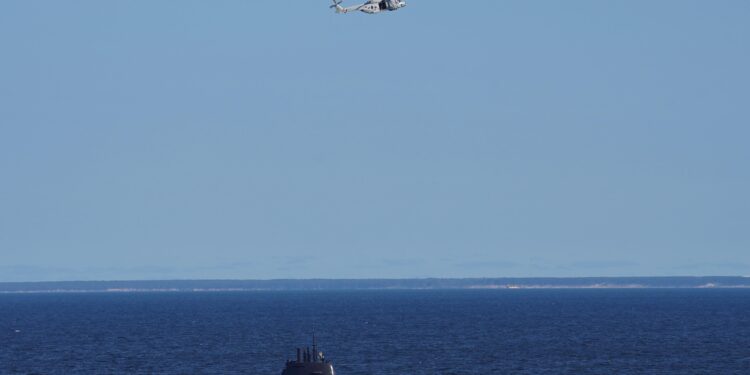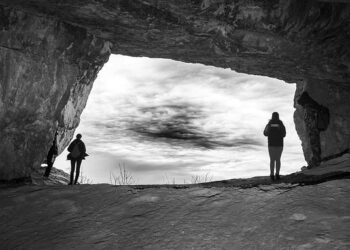Space Norway and SubCom have announced plans to develop the world’s northernmost subsea cable system, marking a significant milestone in global telecommunications infrastructure. The new project aims to enhance connectivity in the Arctic region, supporting increased data demands driven by scientific research, military operations, and commercial activities. By leveraging cutting-edge technologies, the initiative seeks to provide reliable, high-capacity links in one of the most challenging environments on Earth. This collaboration underscores the growing strategic importance of the Arctic and the ongoing efforts to bridge communication gaps in remote areas.
Space Norway and SubCom Collaborate on Groundbreaking Arctic Subsea Cable Initiative
Space Norway and SubCom have embarked on an ambitious project set to redefine Arctic telecommunications by installing the world’s northernmost subsea cable system. This innovative infrastructure aims to enhance connectivity across remote regions, overcoming the challenges posed by extreme polar conditions. Utilizing state-of-the-art technology, the cable will enable robust data transmission between key northern hubs, supporting both civilian and defense communications while fostering economic development in the High North. The partnership emphasizes sustainability, ensuring minimal environmental impact throughout deployment and operation phases.
The project highlights several key features:
- Resilient Design: Engineered to withstand Arctic ice movement and sub-zero temperatures.
- Extended Reach: Connecting communities and data centers across Norway, Svalbard, and beyond.
- Increased Capacity: Supporting future demands for high-speed internet, IoT, and satellite communication integration.
- Strategic Importance: Enhances Norway’s role in global digital infrastructure and Arctic sovereignty.
| Feature | Description | Benefit |
|---|---|---|
| Climate Adaptation | Durable materials and insulation | Ensures uninterrupted service |
| Bandwidth | Multiple Tbps capacity | Handles future data growth |
| Deployment Timeline | Completion expected by 2026 | Rapid enhancement of regional connectivity |
Technical Challenges and Innovative Solutions for Deploying the World’s Northernmost Cable System
The deployment of the world’s northernmost subsea cable system presents a formidable set of challenges unprecedented in the telecom industry. Extreme Arctic temperatures, combined with unpredictable ice flows and remote geography, demand cutting-edge engineering and logistics. Traditional cable laying techniques had to be reimagined to ensure the cable’s resilience and uninterrupted operation throughout the harsh polar winters. To tackle these conditions, Space Norway and SubCom have pioneered adaptive solutions such as reinforced cable armor, specialized insulation materials capable of withstanding sub-zero temperatures, and autonomous undersea vehicles designed for precise cable placement beneath shifting ice sheets.
In addition to physical restrictions, environmental protection standards elevate the complexity of the project, compelling the integration of sustainable practices at every stage. The use of real-time monitoring systems combined with advanced predictive analytics allows the team to anticipate and mitigate risks posed by natural Arctic phenomena. Below is a summary of key innovations driving this venture:
| Challenge | Innovative Solution | Impact |
|---|---|---|
| Extreme temperatures (-50°C) | High-performance thermal insulation | Ensures cable integrity & longevity |
| Iceberg and sea-ice movement | Dynamic route adjustment technology | Reduces risk of cable damage |
| Remote location logistics | Autonomous undersea vehicles | Enhanced precision & reduced deployment time |
Strategic Implications and Recommendations for Enhancing Arctic Connectivity Infrastructure
The advancement of Arctic connectivity infrastructure requires a holistic approach centered on resilience and strategic foresight. The deployment of the world’s northernmost subsea cable system by Space Norway and SubCom highlights the critical need for robust infrastructure that can withstand extreme climatic conditions and fragile ecosystems. Key considerations for policymakers and industry leaders include:
- Prioritizing environmental sustainability to mitigate ecological impact during installation and operation.
- Integrating cutting-edge technology capable of operating reliably in subzero temperatures and amidst shifting sea ice.
- Collaborating with indigenous communities and regional stakeholders to ensure mutual benefits and knowledge sharing.
- Establishing redundant network routes to secure uninterrupted connectivity in cases of natural or technical disruptions.
Structured investment in Arctic subsea infrastructure promises not only enhanced communication capacities but also strategic geopolitical advantages. To effectively guide these efforts, a comparative framework can assist stakeholders in evaluating critical infrastructure attributes:
| Infrastructure Aspect | Priority | Recommended Action |
|---|---|---|
| Durability & Materials | High | Use anti-corrosive and cold-resistant compounds |
| Environmental Impact | High | Conduct rigorous impact assessments and adapt installation |
| Scalability | Medium | Design modular sections for future expansion |
| Community Engagement | High | Involve local stakeholders in planning and operational phases |
| Security & Redundancy | High | Implement multiple fail-safes and cyber protection layers |
The Way Forward
As Space Norway and SubCom move forward with plans to establish the world’s northernmost subsea cable system, the project is set to enhance connectivity in the Arctic region significantly. By bridging remote areas with advanced telecommunications infrastructure, this initiative promises to support growing demands for data capacity and improve strategic communications. Industry stakeholders will be watching closely as the development progresses, marking a new chapter in subsea cable innovation and Arctic accessibility.
















